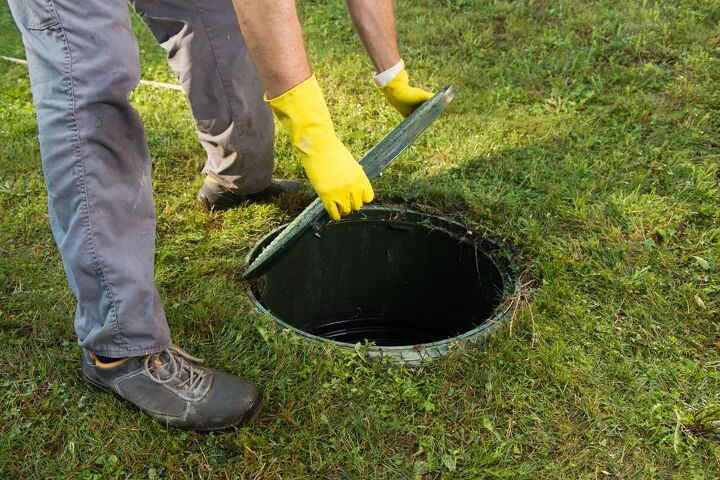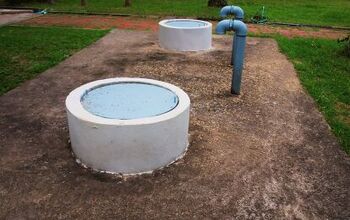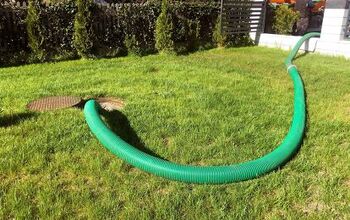How Far Apart Are Septic Tank Lids? (Find Out Now!)

Homeowners need to be knowledgeable and careful if they want to keep their septic tanks in good condition. The things you know could help save your household’s septic tank from unnecessary damage. Among the things worth knowing is the distance separating your septic tank’s lids.
Lid placement for septic tanks is not universal across all types. You’ll find that there are certain variables that help determine the placement of the lids.
The distance between the septic tank’s lids is significantly impacted by the size of the container itself. Generally speaking, the distance between the lids increases as the tank goes up in size. The distance separating septic tank lids usually falls within the range of six to seven feet.
Knowing more about your septic tank as well as its lids can help you care for them better. Find out more about that important part of your household by continuing with the rest of this article.
Do You Need a Septic Tank Cleaning or Pumping Service?
Get free, zero-commitment quotes from pro contractors near you.

The Importance of Knowing the Distance between the Septic Tank’s Lids
You may be wondering why it’s important to know about the septic tank’s lids. Will knowing how to find the septic tank lids or how far apart ultimately matter? The answer is yes, knowing the answers to those questions will help in the long run. Homeowners need to know more about the septic tank’s lids for two reasons.
First off, you will not be able to do much with your yard if you remain unaware of where the septic tank’s lids are. Although septic tank lids are designed to be sturdy and very durable, they are still susceptible to external forces. You cannot be careless with them and expect them to remain intact.
One of the mistakes many homeowners make is consistently driving over their septic tank’s lids. Keep making that mistake and it will only be a matter of time before the lids crack.
Fail to notice those damaged lids in time and you may end up saddled with expensive repair bills. Even if you are able to spot the damaged lids early on, you will still have to pay for replacements. It would be better to avoid damaging them altogether.
Homeowners should also pay attention to the lids because they often send out signals if the septic tank is having issues. Water pooling around a lid is usually a sign of trouble. Unpleasant odors may also start to escape through lids if the septic tank is full or clogged. You’ll be able to check for those odors by going to where the lids are located.
Aside from those aforementioned reasons, the professionals you hire will also want to know how far apart the lids are. If they know the distance between the lids, they will be able to tackle their jobs better.
What Is the Distance between the Septic Tank Lids?
The distance between septic tank lids is not fixed. The size of the tank itself can play a huge role in determining how far apart the lids are.
Septic tanks with a capacity of 1000 gallons usually have lids that are spaced six feet apart. You can also find some 1000-gallon tanks with lids that are separated by six and a half or even seven feet. Since many households use 1000-gallon tanks, the ones installed on your property may have lids separated in that manner too.
Go up in size and the gap increases. You can find 1500-gallon tanks with covers that are separated by about eight feet. Some 1500-gallon tanks also have lids that are nine feet apart. On the opposite end of the spectrum, smaller septic tanks tend to have lids that are closer together. 500-gallon tanks may have lids that are spaced about four to five feet apart.
How Many Lids Does a Septic Tank Have?
While walking around your yard, you may notice that a few wet spots have formed. You’re probably expecting one or two wet spots, but you could see more than that.
Modern septic tanks now have multiple lids. At a minimum, modern septic tanks are equipped with two lids. You can still find tanks that use three or more though. There is also a chance that your septic tank only has one lid. The tanks that were built and installed prior to 1975 only used a single lid.
How Far Deep into the Ground Are the Septic Tank Lids?
Homeowners should also know how far deep their septic tank’s lids are buried. This is important to know if you plan on checking out your septic tank yourself. You don’t want to dig too deep into the ground and accidentally damage the lid while doing so.
Most septic tank lids are buried between four inches to four feet deep into the ground. Dig slowly at first to avoid sticking the sharp end of the shovel into the lid.
If you want to further reduce the chances of damaging the septic tank’s lid, you can cause probes. Probes allow you to feel out the area underneath the soil. They can let you know if there’s something solid down there you have to avoid striking.
How Big Are the Septic Tank’s Lids?
Separating the septic tank’s lids is also necessary due to how big they are. A single septic tank lid can reach up to 24 inches in size. Even the smaller lids will reach about 20 inches. The lids used to secure septic tanks are on the thicker side as well. You can find lids that are three to four inches thick.
Working with septic tank lids on your own is not recommended given how big they are. They can be unwieldy and you may accidentally injure yourself if you cannot handle them properly.
Consider hiring professionals to help you out if you want to remove or replace the tank’s lid. If you don’t want to pay for professional assistance, call a friend over who can help you handle the cover.
What Is the Right Way to Maintain a Septic Tank’s Lid?
Compared to the other parts of the septic tank, the lids are probably the easiest to maintain. The first thing you must do is to ensure that the lid is not supporting too much weight. You want to avoid driving over the spot where the lid is.
You should also avoid placing heavy fixtures over the lid. Some smaller decorative elements are fine, but bigger pieces such as fountains or flowerbeds should be located elsewhere. Clearing the area on top of the lid is also a good idea. You don’t want debris getting in there and potentially compromising the hold of the lid.
It’s fine if you want to obscure the lid by planting grass around it, but you should keep watch over them. Cut down the blades of grass if they’re starting to grow too tall or if they’re moving into the lid.
Regular inspections are also important for septic tank lids. Check up on them every few months or so to see if they have sustained any damage. Homeowners can also perform the inspections themselves.
However, if you suspect that the lid is damaged, it’s best to have it checked by a professional. They may be able to spot some damage that would have gone unnoticed otherwise.
Do You Need a Septic Tank Cleaning or Pumping Service?
Get free, zero-commitment quotes from pro contractors near you.

Related Questions
How Do You Secure Septic Tank Lids?
You don’t want anyone messing with your septic tank lid. To prevent that from happening, consider reinforcing the lid with bolts or screws. You can even attach a lock to the lid to ensure that only you have access to it.
Do You Need to Seal Your Septic Tank’s Lid?
Sealing the septic tank’s lid is absolutely essential. If you don’t seal the perimeter of the lid, you could allow all kinds of debris to enter the tank. Forming a seal around the lid also helps keep water out whenever it’s raining. Creating that seal also prevents foul odors from escaping the septic tank.Mortar mix can be used to form the secure seal along the opening of the tank and the lid. You can apply that seal on your own or entrust that job to the professionals.

Gary Evans is passionate about home improvement. He loves finding out how to make improvements in the easiest, most practical, and most affordable ways. Upgrading his home kitchen is one of his ongoing hobbies. Gary is also a long-time content creator and enjoys spending his free time tending to his hydroponic vegetable garden.
More by Gary Evans















![Cost To Drill A Well [Pricing Per Foot & Cost By State]](https://cdn-fastly.upgradedhome.com/media/2023/07/31/9074980/cost-to-drill-a-well-pricing-per-foot-cost-by-state.jpg?size=350x220)











